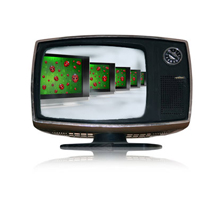  The traditional mode of delivering TV services over the broadcast medium is rapidly facing competition from new avenues of transmission reveals a new study from Ericsson.
According to Ericsson’s ConsumerLab that conducted a study called ‘Multi Screen Media Consumption 2010’ and which collected data from countries including China, Germany, Spain, Sweden, Taiwan, UK and the US representing over 300 million consumers, people are spending up to 35 percent of their leisure time watching TV and video content, and that consumers are becoming more aware of new technologies, which in turn are creating new patterns of media consumption.
The survey highlights that over 70% of consumers are streaming, downloading or watching recorded broadcast TV on a weekly basis, and 50 percent are using internet-based on-demand TV/video every week. The study says that the ability to decide when and how to watch TV will affect the role of linear or scheduled broadcast content.
For consumers, the need is to watch personalized, easy-to-use, high-quality, on-demand service without commercial breaks.
Anders Erlandsson, Senior Advisor at Ericsson ConsumerLab, says, “The conclusion of our study is that the consumption is fragmented and complex. There are few established consumption patterns and it’s a trial-and-error market with lots of curiosity around it. “The consumer is looking for a solution that can offer them the freedom to choose what they want, when they want it and how they want it. The user experience is in focus, rather than the technical platform.”
The study points out that consumer spending will shift in the future, with a significant increase in on-demand spending, provided that consumer requirements for high quality, ease of use and access to the right content are met. |